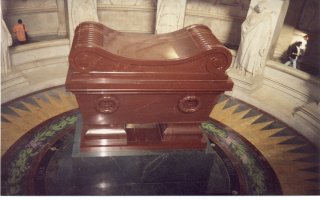
foreword | Historical Narratives | Resources | Links | Contact
SARAH OF STAMFORD PARK
History is the chronicle of famous people and places.
In 1816 the renowned English poet, Lord Byron, toured Europe and one of the famous historic sites he visited was the site of the Battle of Waterloo
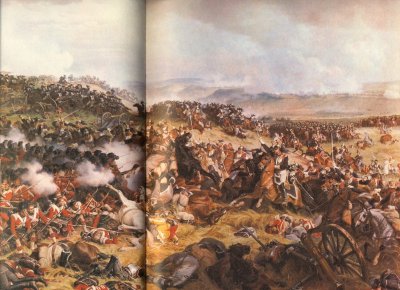 |
|
Battle of Waterloo |
The conflict between forces of Napoleon and the Duke of Wellington had taken place on June 18th, 1815 and the blood-soaked burial mound was still fresh. The poet's emotions were so stirred by the scene, the circumstances and the famous ball that preceded the battle, he immortalized them all in a poem. [See Below *]
There was a sound of revelry by night,
And Belgium's Capital had gathered then
Her Beauty and her Chivalry, and bright
The lamps shone o'er fair women and brave men;
A thousand hearts beat happily; and when
Music arose with its voluptuous swell,
Soft eyes looked love to eyes which spake again,
And all was merry as a marriage bell;
But hush! hark! a deep sound strikes like a rising knell.
Therein lies a tale that touches the early history of Niagara. It begins strangely enough in a barn for that is where Charles Lennox was born. [**] In 1764 his mother unexpectedly gave birth to him while she and her husband were on a fishing trip. In 1806 that same Charles Lennox became the 4th Duke of Richmond and married Charlotte Gordon, daughter of the 4th Duke of Gordon. The couple had fourteen children, seven sons and seven daughters one of whom was named Sarah.
Partly because of his lavish life style and likely also for reasons of economy because of the size of his family, the Duke moved from England to Brussels, Belgium in 1813 where the cost of living was less. In that city on Thursday, June 15th, 1815, three days before the Battle of Waterloo, Charlotte, Duchess of Richmond, gave a celebrated ball which was described by some as the most famous in history. It was held in honour of the Allied officers assembled in Brussels in readiness for the coming confrontation with Napoleon.
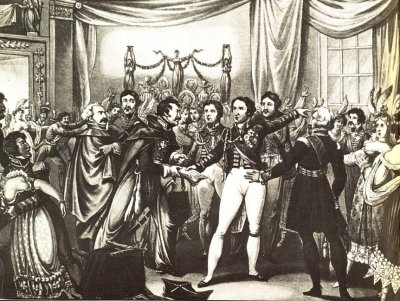 |
|
The Duchess of Richmond's Ball, 15 June, 1815 |
It was the most glittering social occasion in the 19th century. All of Belgium's elite were in attendance including the great Duke of Wellington who graced the occasion with his presence. His attendance was part of Wellington's psychological warfare which always involved "pleasure as usual." Where better to await the morning than under the "convenient camouflage and at the ready-made rendezvous of a ball." That after all was where "every British officer of rank was likely to be found." At later post-mortems Wellington was criticized by some for being at the ball rather than monitoring the movement of Napoleon and his French troops. However, his presence there had to do with "Morale building, duty, convenience - they all played a part in getting Wellington to the ball." Besides the Irish devil in him wanted to go. The British military would learn soon enough of the danger when the moment came to prevail or to perish. Only seventy-two hours later fully four in ten of the officers present would be dead or wounded.
The Iron Duke, Wellington's nickname, was a close friend of the Richmonds and had often romped with their children. With Wellington at the highlight of the capital's social season were a great many dashing young officers, the cream of Britain's military establishment. Brussels was breathless with excitement and not even the menacing French forces at the very gates of the city could match the emotion engendered by the Ball - at least not among the women of the town.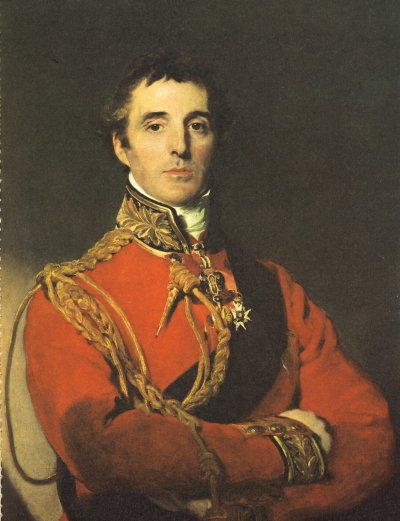 |
|
Duke of Wellington [****] |
Everybody who was anybody had to be at the Ball and those hopeful of attending left no stone unturned as they planned, plotted, schemed and conspired to get tickets to the celebrated party. According to William Makepeace Thackery, the famous English writer who was in attendance, it was a perfectly delightful ball with few "nobodies" present.
Brussel's foremost citizens danced the quadrille and quaffed the finest wines in Richmond's glittering palace, where for the magnificent occasion the pillars of the palace were wreathed in leaves and flowers and the walls adorned with hangings in the royal colours of crimson, gold and black. Everyone present had a memorable time wining, dining and dancing into the wee hours of the morning. The glorious affair lasted almost to the brink of the battle.
"But hush! Hark! A deep sound strikes like a rising knell!
Did ye not hear it? - No - 'twas but the Wind,
Or the car rattling o'er the stoney street;
On with the dance! Let joy be unconfined;
No sleep till morn, when Youth and Pleasure meet
To chase the glowing hours with flying feet -
But hark! - that heavy sound breaks in once more,
As if the clouds its echo would repeat;
And nearer, clearer, deadlier than before!
Arm! Arm! It is - it is - the cannon's opening roar!
Wellington knew all too well that the cannon sounds signalled the advance towards the capital of the army of the Little Corporal, Napoleon's nickname.
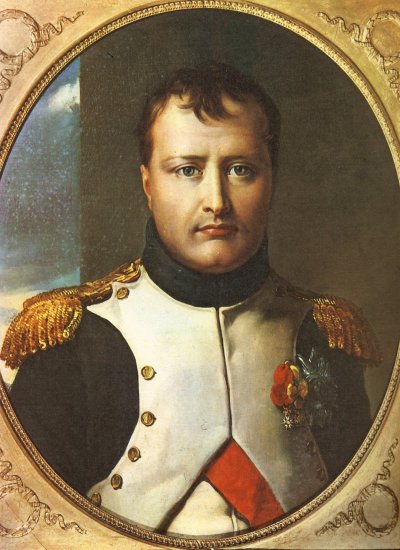 |
|
Emperor of France Napoleon Bonaparte |
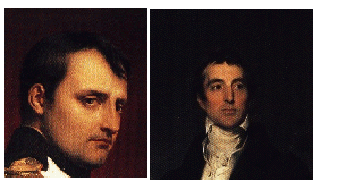 |
|
Napoleon and Wellington |
At the sound and the summons of the drums and bugles, the officers prepared to depart in 'hot haste.' The ball-room was like a beehive someone had broken open.
Ah! Then and there was hurrying to and fro -
And gathering tears, and tremblings of distress,
And cheeks all pale, which but an hour ago,
Blushed at the praise of their own loveliness.
And there were sudden partings, such as press
The life from out young hearts, and choking sighs
Which ne'er might be repeated; who could guess
If ever more should meet those mutual eyes,
Since upon night so sweet, such awful morn could rise!
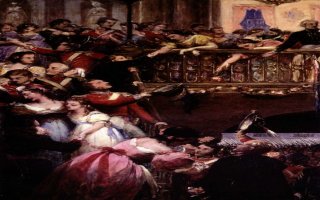 |
|
Napoleon Awaits: Farewell To Wives & Sweethearts |
The Battle of Waterloo[***] was about to begin.
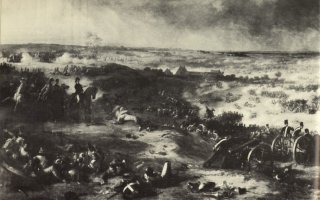 |
|
Battle of Waterloo, 18 June 1815 Wellington on left in civilian dress. [Royal Military Museum, Sandhurst] |
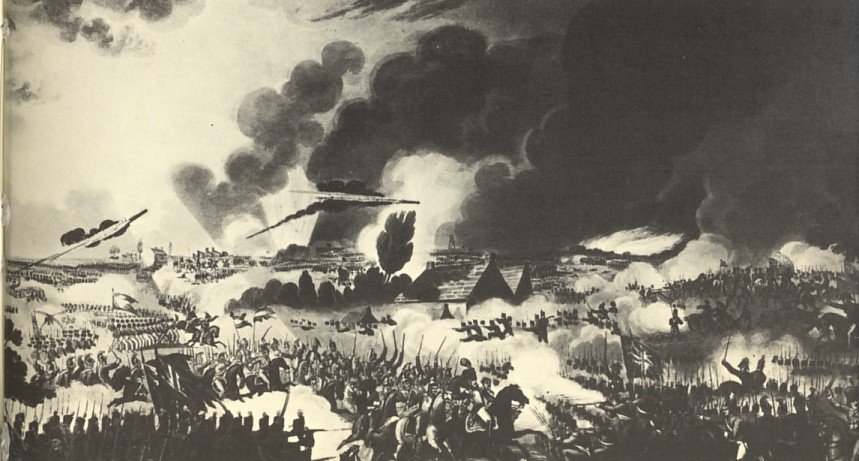 |
|
Battle of Waterloo Late Afternoon [Congreve rockets show up as sun begins to set.] |
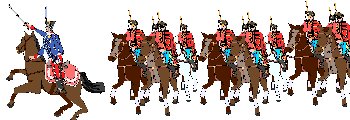 |
The Duke of Wellington's victory over Napoleon at Waterloo in 1815 immortalized the Iron Duke and banished Bonaparte to the British territory of St. Helena, a 122-square kilometre volcanic speck of rugged plateaus and plains in the south Atlantic Ocean [***]
.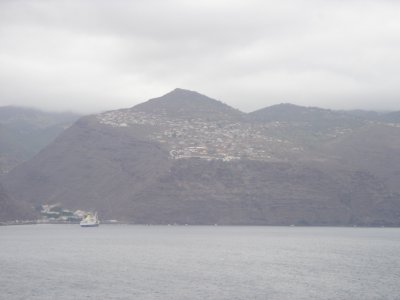 |
|
St. Helena and its tiny capital, Jamestown. |
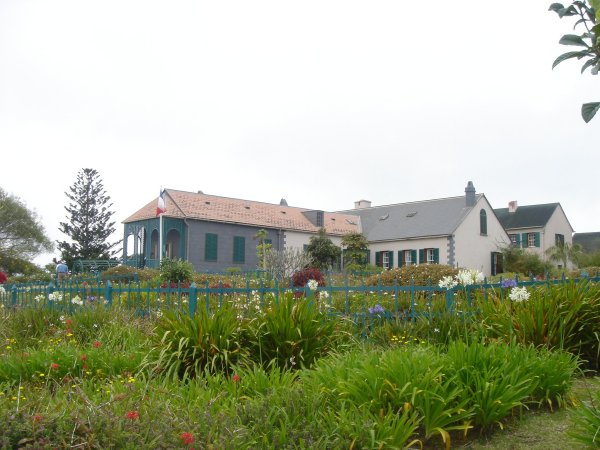 |
|
Longwood House, Napoleon's Home on St. Helena from 1815 until his death in 1821. |
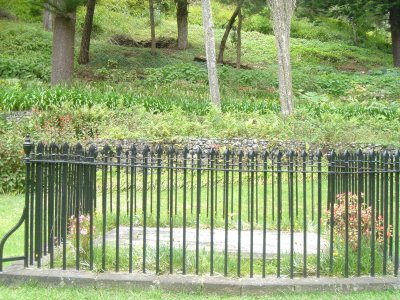 |
||
|
Napoleon's Grave Site in Sane Valley on St. Helena where he was buried in 1821.
|
Among Wellington's officers was Major-General Peregrine Maitland, commander of the 1st brigade of the Foot Guards at the battle of Waterloo. Maitland, who had been a widower for ten years and had a son also named Peregrine, had eyes that evening only for Lady Sarah, the 23-year old daughter of the Duke and Duchess of Richmond. Sarah, who was a sprightly,
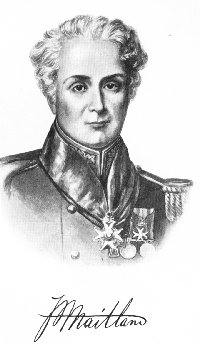 |
|
Sir Peregrine Maitland |
fun-loving lady, had an exquisite complexion with a beautiful bloom in her cheeks. With her pretty mouth, remarkably fine teeth and lustrous hair, she was exceedingly attractive. Maitland was smitten by Sarah and she by him. Peregrine pleaded for her hand but Richmond refused to add his blessings to their bliss for two reasons. He felt their age differences were too great - Peregrine was 38, but more importantly the Duke had high hopes for a match of greater wealth and distinction for his lovely daughter.
 |
Parental disapproval proved to be no impediment to the couple who simply eloped and wed in Paris on the 9th of October, 1815 at the Duke of Wellington's quarters. When things settled down they returned to face father with the fate accompli. There was no lingering hostility, however, largely because of the intervention of the great Duke of Wellington who hastened to support Maitland and his marriage to Sarah.
 |
|
Duke of Richmond |
In 1818 the Duke of Richmond was appointed governor-in-chief of British North America. At the same time his son-in-law, Sir Peregrine Maitland, was confirmed as a lieutenant-governor of Upper Canada. The appointment of Maitland, who proved to be a mediocre governor, was undoubtedly attributable to the Duke of Richmond and to the British government's policy of rewarding its military heroes prominent among whom were Wellington's Waterloo Warriors. by dispatching them to preside over Britain's possessions in the wilds.
On the 12th of August, 1818 Sir Peregrine and Sarah arrived in York and over the next ten years Maitland's career was considerably advanced socially by Lady Maitland, a gracious, graceful and elegant woman who was always at his side.
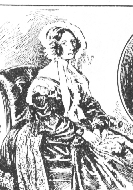 |
|
Lady Sarah Maitland |
In 1793 John Graves Simcoe, first lieutenant-governor of Upper Canada, had described the site of the town of York to the same Duke of Richmond who was then Master General of Ordinance, as "an exceedingly healthy spot." Sir Peregrine, "his countenance ever wearing a mingled expression of sadness and benevolence," could not have disagreed more.
Maitland failed to find York to his liking. He believed the tiny capital occupied an unhealthy location where miasma from the marshes of the Don River caused fever and ague. Maitland disliked it so much, in fact, that he attempted to have the capital relocated to the shores of Lake Simcoe and later to Kingston. Both sites, he said, were more easily defensible than York. Sarah particularly abhorred the oppressive heat of summer, so the couple sought relief from the sultry temperatures and the annoying nuisances of York. After an exhaustive search of the province they finally found the ideal location on the other side of Lake Ontario.
In July, 1822 Maitland purchased 20.6 hectares from a man named David Bastedo who had inherited the land from his uncle, Gilbert Tice, one of the earliest settlers in Stamford Township. The property was located in the northern section of that township at what is now the northwest corner of the intersection of Portage and Mountain Roads in Niagara Falls, once described as the top of Ravine Hill at St. David's. On this summit at the brow of the escarpment, which afforded a beautiful view of the countryside to the north, the couple constructed a summer home that was cooled by the soft breezes that blew off Lake Ontario. According to one observer it was the only place in Upper Canada "combining our ideas of an elegant, well-furnished English villa and ornamental grounds with some of the grandest and wildest features of the forest scene."
According to one chronicler it was here that Peregrine "could be free of the jarring elements which existed at the capital, York. On this hill Peregrine could live in comparative ease and comfort far from agitators and all their kindred carpers. Here he could live in quiet retirement, savouring all the satisfaction and enjoyment that came from life not far from the thrilling sight and the sound of that wonder of the world, the great cataract of Niagara."
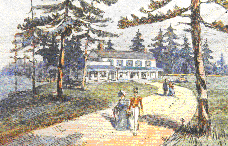 |
|
Stamford Park |
The vice regal residence was modest at first but quickly grew to palatial proportions, expanding from a three-room refuge from the dog-days of summer to the twenty-two room mansion needed to accommodate the governor's retinue of servants, friends and officials. Built in an extensive park surrounded by great trees, Maitland's home was to host many entranced visitors from England. This retreat became an elegant, well-furnished English villa with a gate-keeper's cottage at the entrance and the grandest of grounds boasting gardens, terraces and lawns on which splendid peacocks strutted. All were situated amidst "some of the grandest and wildest features of the forest scene."
Originally named Stamford Cottage, the retreat was renamed Stamford Park in keeping with its sylvan splendour. At this summer sanctuary Sarah, the governor and their guests frolicked in fashionable and carefree comfort until the fall sessions of the legislature summoned them back ever so reluctantly to the tension and trouble that seemed so prevalent in the little capital of York.
Unfortunately not a trace of Maitland's mansion is left to remind us of that lustrous link between the backwoods of Niagara and the chivalry and beauty of Waterloo that bloomed and blossomed that fateful night when Wellington and Napoleon clashed at Waterloo.
[*] George Gordon, Lord Byron, From Childe Harold's Pilgrimage, Canto the Third.
[**] Richmond's life began and ended in a barn. In 1819 while he was on a tour of inspection shortly after arriving in Canada, the Duke of Richmond was bitten at Sorel by a pet fox. Richmond did not realize its seriousness and proceeded to travel about the countryside. Later he became seriously ill with hydrophobia, now known as rabies. Its terrible, torturous effects were fatally experienced at a place outside Ottawa where suffering excruciating pain, Richmond expired in a barn in which he and his party had sought shelter.
[***] The Battle of Waterloo at which Napoleon, Emperor of France, fought against Britain and Prussia. Napoleon was defeated and consigned to the very isolated island of St. Helena where he died. The Duke of Wellington became one of Britain's greatest military heroes and eventually Prime Minister.
[****] Wellington, who by his own admission had only 9 hours sleep in the 90 hour period from June 15th through June 18th, the date of the Battle of Waterloo, candidly confessed later to the Duke of Richmond that Napoleon had tricked him when he attacked sooner than expected. In Wellington's own words, "Napoleon has humbugged me by gaining a 24 hour march without me knowing it."
Copyright © 2013 Website Administrator
